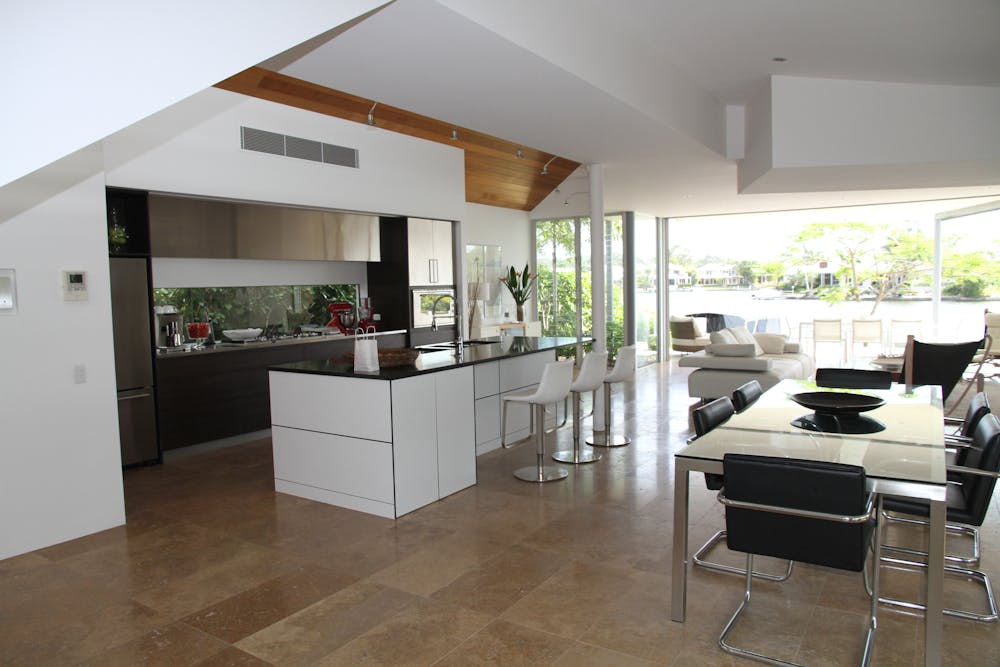-
The Budget-Friendly Guide to Renovating Your Kitchen

The kitchen is the most popular room to renovate in a home. It’s a big job in terms of project scale and cost. Before you hire a contractor and start this exciting project, there are many considerations to keep in mind. If executed correctly, you can not only improve the aesthetic and functional use of your kitchen, but you might get a return on investment. If you plan on selling your home in the future, you could get more value out of your investment. With that in mind, here’s how you can make a budget-friendly plan to renovate your kitchen.
Interview Several Contractors
You should always interview several contractors before you start your project. The recommended number is three but you can interview as many as you want. Get their bids and check references from previous clients. Make sure that all the contractors bidding are providing the same services and materials.
A price quote or bid should specify the materials and products required, labor requirements for the crew and any necessary sub-trades, with costs accompanying each item. Payment details such as timing, costs, and the progress milestones for each payment should also be included in a bid. With different price quotes, you can make an informed decision on the best contractor for your renovation project.
Focus on Renovations with High Returns
When thinking of a profitable home renovation, consider the return on investment (ROI) on your home after the kitchen remodel. Kitchen renovations have the best ROI, usually boasting a 75–100% return.
Consider an appliance swap or kitchen counter refresh for a great ROI. The key is to focus on the areas that give you the best ROI to pump up your resale value. You do not have to change many aspects of your kitchen for this. Talk to your contractor to see what minor remodeling you can do without depleting your bank balance.
Create a Budget
Price is a critical aspect of kitchen renovations. It’s important to set a budget for the project to have a clear idea of both the design and practical requirements. With a rough idea of the costs for the project, create a plan dividing the projects into specific tasks with deadlines and assigning each with a budget.
Always leave room in the budget for the unexpected. Note that the quotes in a budget are “guesstimates,” so factor in extra sum in case you need some extra cash for unforeseen costs. It could be last-minute changes, bust budgets or cost time. As you cannot predict the unknown, have some cash set aside. Typically, this is 5 to 10 percent of the total budget.
You should work out a payment plan and agree with the contractor on the timeframe and how much deposit is required at the beginning of the project. The deposit should not exceed a quarter of the total amount. Having a proper budget and plan can keep your project from turning into a financial nightmare.
Lastly, consider alternative financing options versus dipping into your savings, 401K, or retirement fund. For example, if you’re a senior with majority ownership of your home, you might consider a reverse mortgage, where you can get paid a monthly amount based on various factors.
Consider Cabinet Refacing
Cabinetry tends to be one of the most expensive parts of a kitchen renovation. It can take up to half of the budget in a minor remodel and 40% in a major upscale renovation. Consider a mere facelift rather than a full-blown kitchen renovation. Instead of tearing down the old cabinets, opt for cabinet refacing. This covers the veneers, hinges, handles and drawer pulls, giving your kitchen a fresh, new look on a shoestring budget. Refacing will cost about 30–50% less than custom cabinet replacement. It is even cheaper if you are able to do-it-yourself.
With plenty of style options and the luxury of retaining your kitchen layout, cabinet refacing is ideal for those who desire minor changes for a dramatically different look. Further, the green remodeling alternative keeps MDF from landfills and prevents more trees from being cut down for new kitchen cabinets.
Avoid High-Cost Upgrades
For a proper renovation, you want to have high-quality functional items for your own use and potential resale value. Consider getting affordable alternatives so you can stay within your budget.
Go for a quality stone or granite countertop, which will cost a fraction of a high-end countertop, leaving you with more money for further renovations. You can also get a quality stand-alone set of kitchen appliances with a pro-look like stainless steel. While it is tempting to pick out all the fancy appliances, get only the reliable basics that you will use.
Where you can, consider what little changes you can make without drastically altering the kitchen design. Changing color schemes, working with specific textures, using inexpensive materials like paneling and using visual aspects like open shelving can be appealing without having to sweat it too much.





